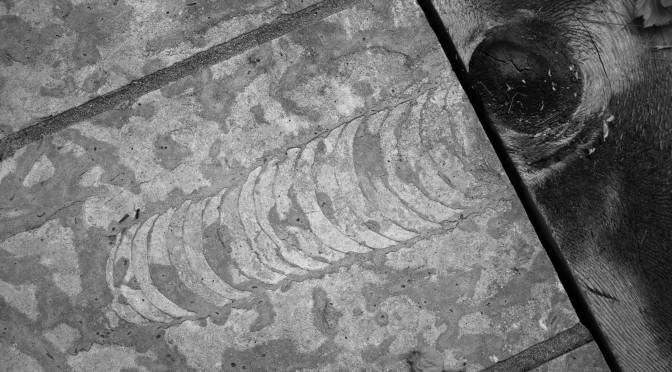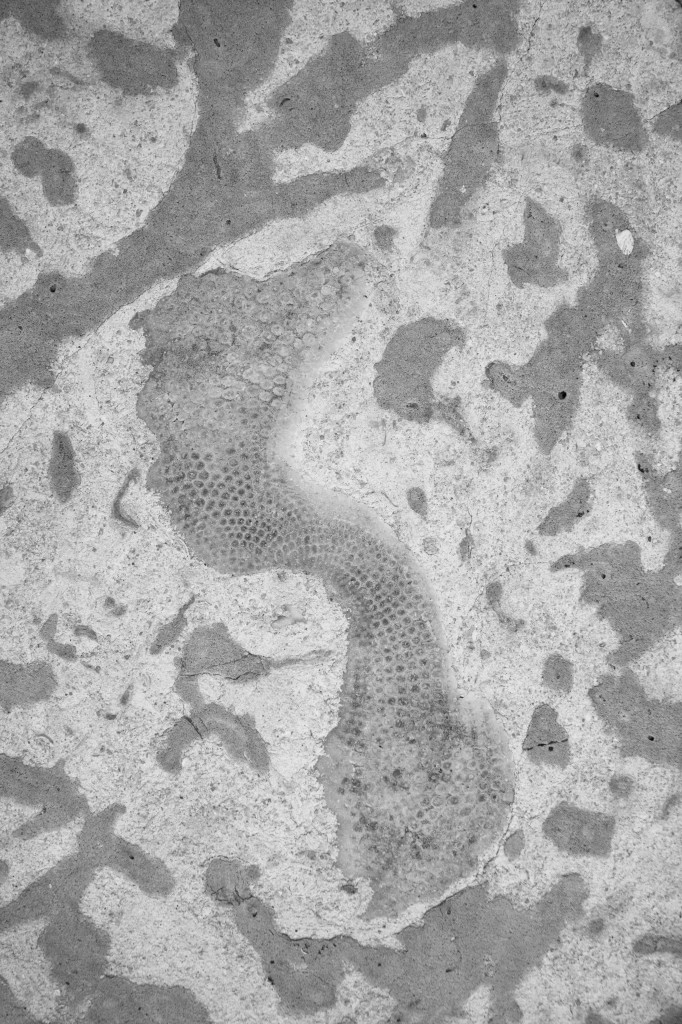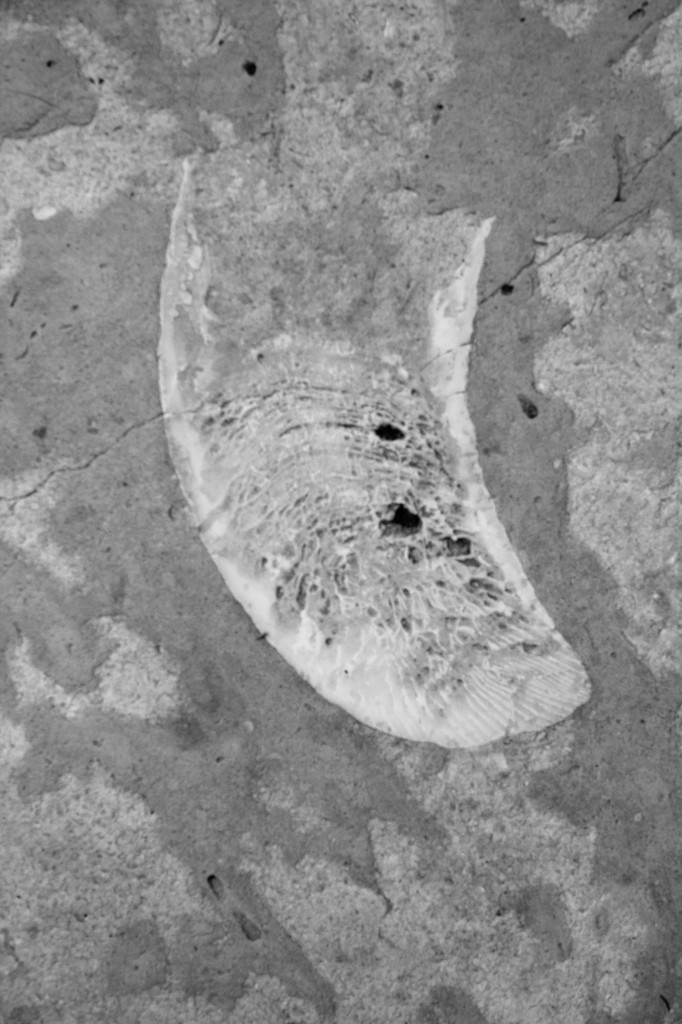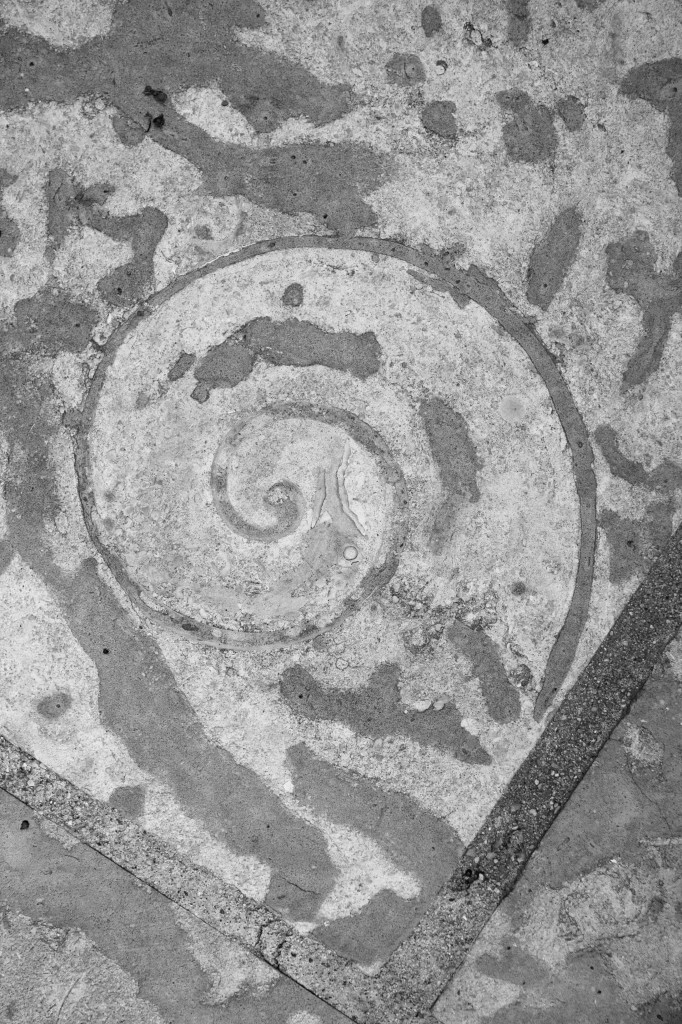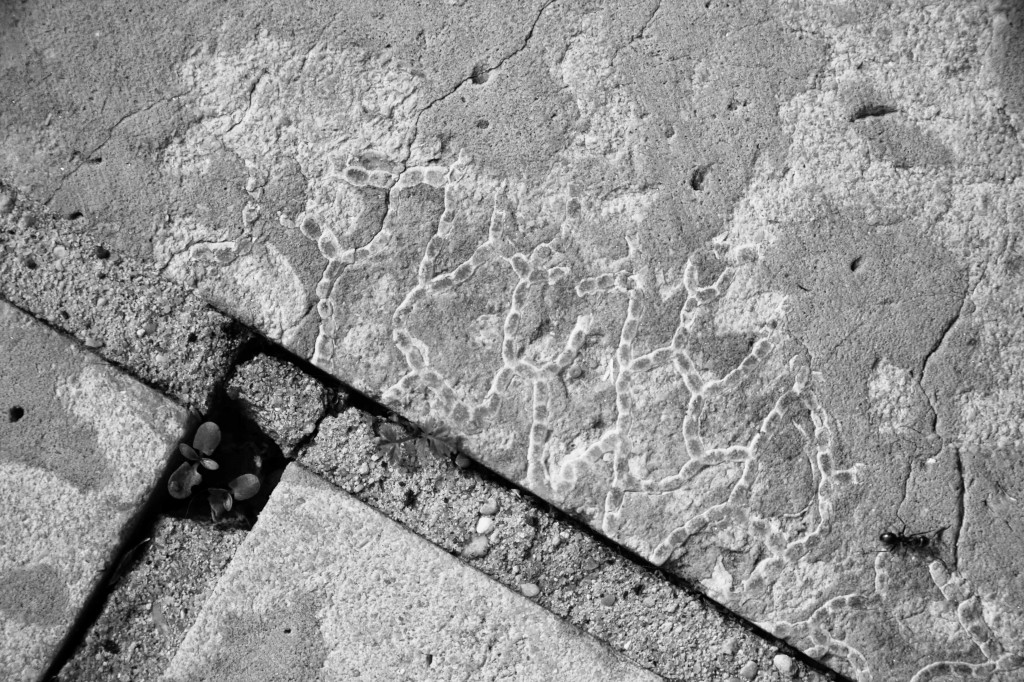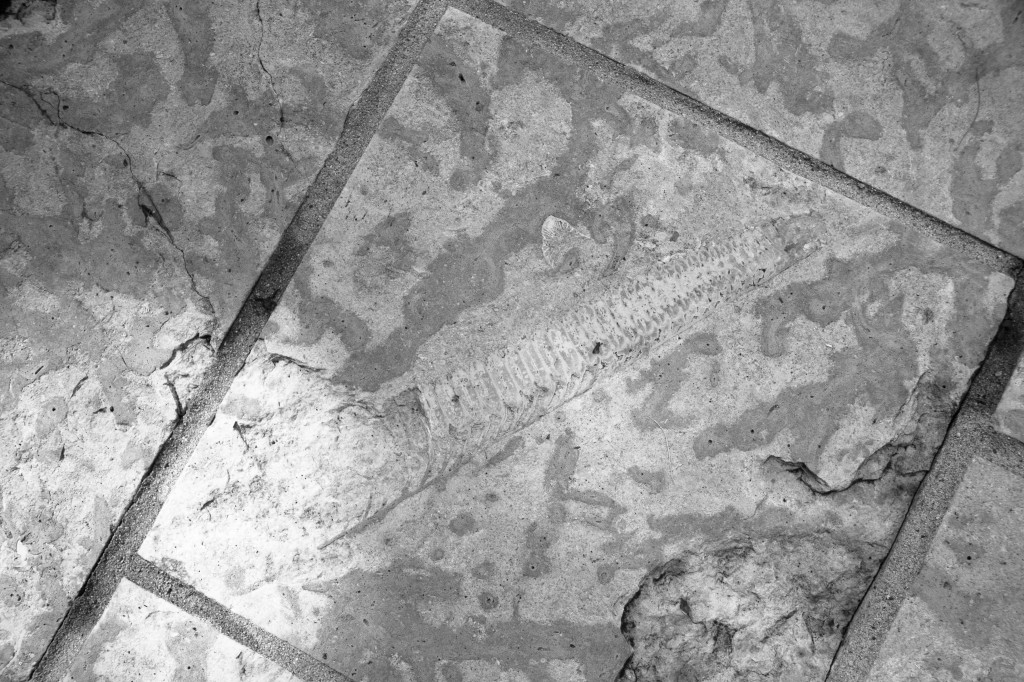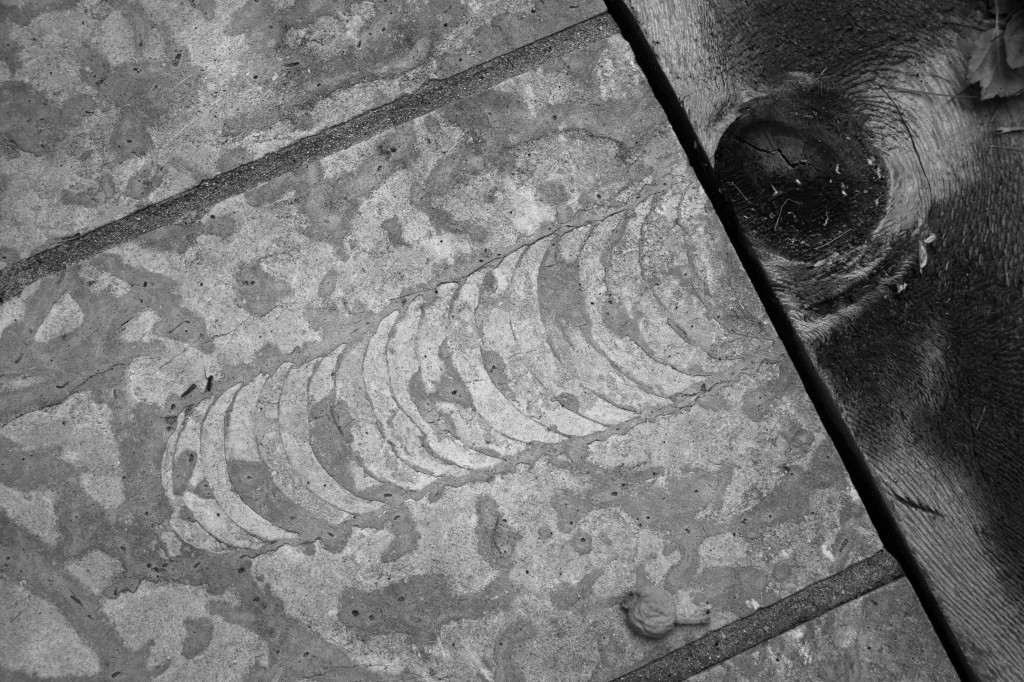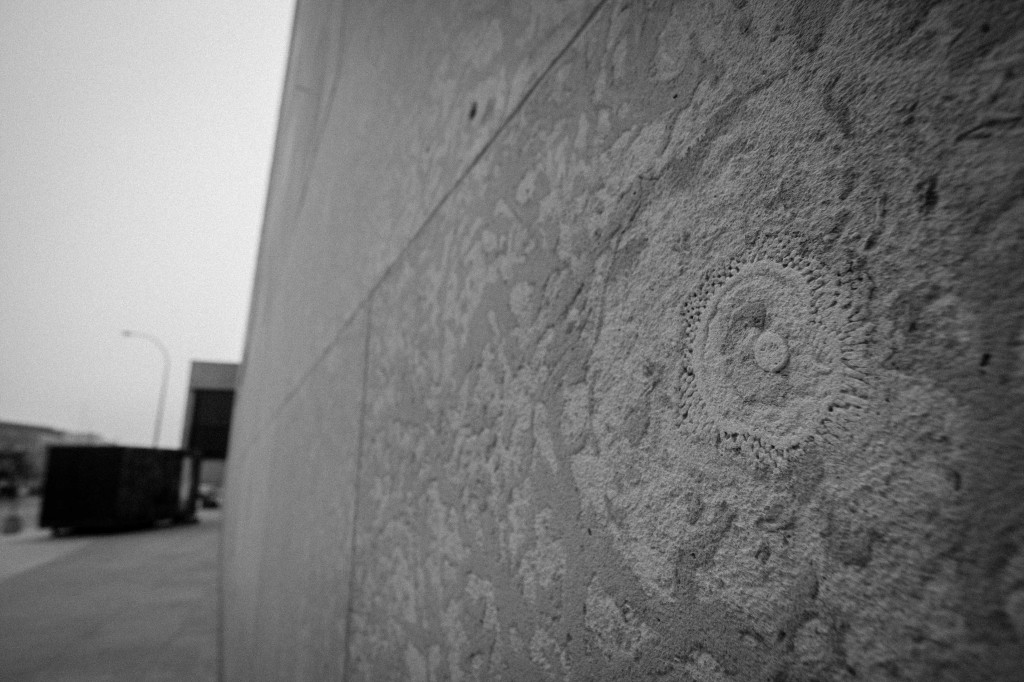A few weeks back I was taking my morning coffee on the expansive patio of a friend’s house in Winnipeg. My bare feet had graced this space a number of times, but I had not, until just then, grasped the obvious: I was walking on fossils – a LOT of fossils – which are 450 million years old. ((http://www.gac.ca/PopularGeoscience/factsheets/TyndallStone_e.pdf))
It’s called Tyndall stone, a dolomitic limestone quarried about 40 kilometres north of the city in the Gillis Quarry at Garson, Manitoba. It’s famous for its cream colour (the limestone) and striking mottling (the dolomite) caused by the burrowing of marine creatures during its creation.
It contains gastropods, brachiopods, cephalopods, trilobites, coral, and stromatoporoid fossils. ((http://en.wikipedia.org/wiki/Tyndall_stone))
Several Tyndall stone buildings number among my favourites: the Parliament Buildings in Ottawa, the Manitoba Legislature, the Museum of Civilization (History) and the Empress Hotel in Victoria. So how, I ask myself, can I NOT have known about the fossils? What have I been so busy looking at that they didn’t sink in? My ignorance underwhelms me.
The stone is fascinating and beautiful beyond compare and, apparently, ubiquitous in these parts. Once I knew what I was looking at/for I began to see it on buildings, walls and pavers everywhere. An architectural tour of Winnipeg’s Tyndall stone buildings can be found here.
Talk about a living museum.
Further reading:
The Stone Diaries by Carol Shields
Canada Rocks: The Geologic Journey, by Nick Eyles and Andrew Miall
Tyndall Stone, Winnipeg Architecture Foundation
